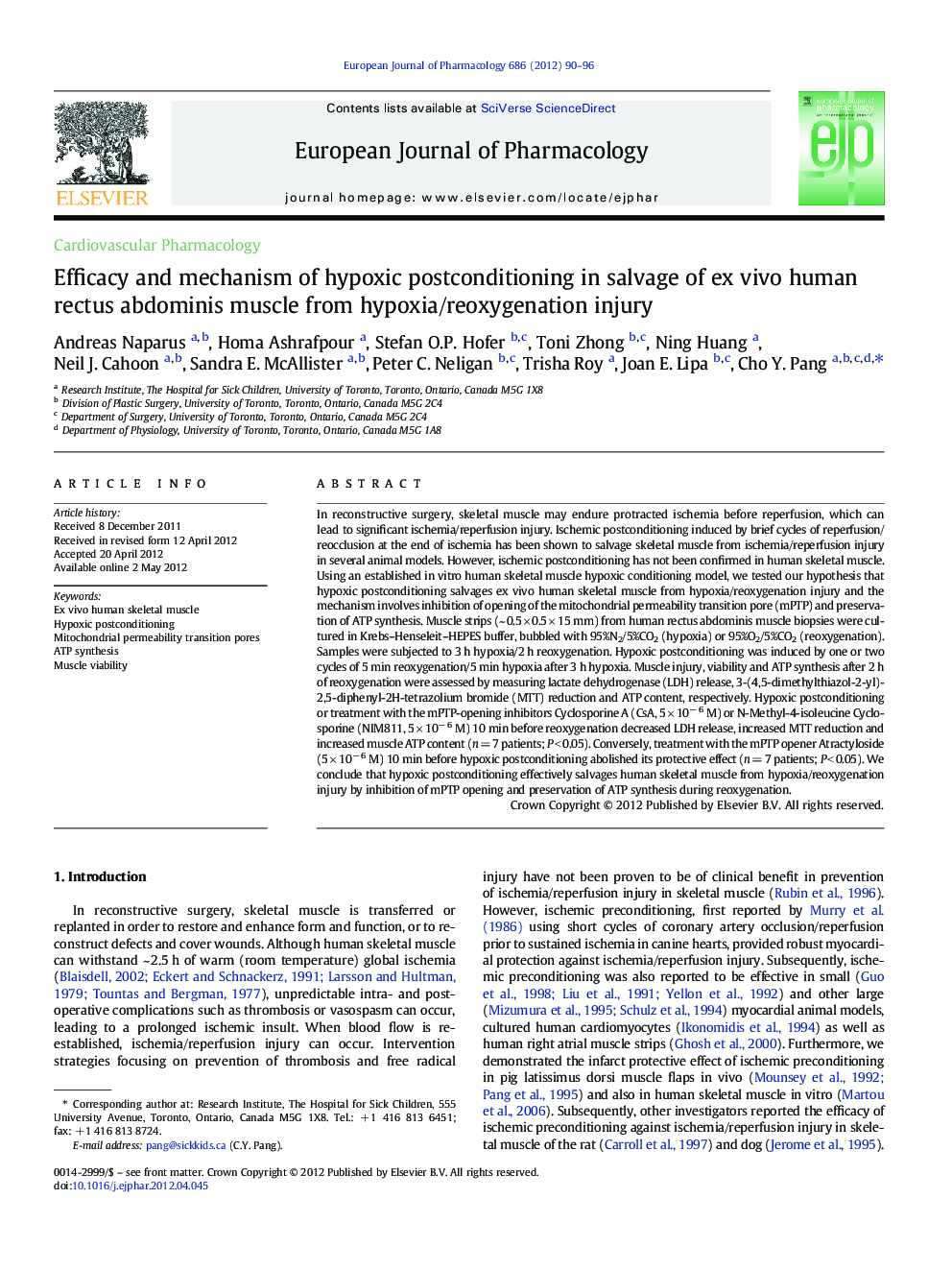| کد مقاله | کد نشریه | سال انتشار | مقاله انگلیسی | نسخه تمام متن |
|---|---|---|---|---|
| 5829381 | 1558995 | 2012 | 7 صفحه PDF | دانلود رایگان |

In reconstructive surgery, skeletal muscle may endure protracted ischemia before reperfusion, which can lead to significant ischemia/reperfusion injury. Ischemic postconditioning induced by brief cycles of reperfusion/reocclusion at the end of ischemia has been shown to salvage skeletal muscle from ischemia/reperfusion injury in several animal models. However, ischemic postconditioning has not been confirmed in human skeletal muscle. Using an established in vitro human skeletal muscle hypoxic conditioning model, we tested our hypothesis that hypoxic postconditioning salvages ex vivo human skeletal muscle from hypoxia/reoxygenation injury and the mechanism involves inhibition of opening of the mitochondrial permeability transition pore (mPTP) and preservation of ATP synthesis. Muscle strips (~ 0.5 Ã 0.5 Ã 15 mm) from human rectus abdominis muscle biopsies were cultured in Krebs-Henseleit-HEPES buffer, bubbled with 95%N2/5%CO2 (hypoxia) or 95%O2/5%CO2 (reoxygenation). Samples were subjected to 3 h hypoxia/2 h reoxygenation. Hypoxic postconditioning was induced by one or two cycles of 5 min reoxygenation/5 min hypoxia after 3 h hypoxia. Muscle injury, viability and ATP synthesis after 2 h of reoxygenation were assessed by measuring lactate dehydrogenase (LDH) release, 3-(4,5-dimethylthiazol-2-yl)-2,5-diphenyl-2H-tetrazolium bromide (MTT) reduction and ATP content, respectively. Hypoxic postconditioning or treatment with the mPTP-opening inhibitors Cyclosporine A (CsA, 5 Ã 10â 6 M) or N-Methyl-4-isoleucine Cyclosporine (NIM811, 5 Ã 10â 6 M) 10 min before reoxygenation decreased LDH release, increased MTT reduction and increased muscle ATP content (n = 7 patients; P < 0.05). Conversely, treatment with the mPTP opener Atractyloside (5 Ã 10â 6 M) 10 min before hypoxic postconditioning abolished its protective effect (n = 7 patients; P < 0.05). We conclude that hypoxic postconditioning effectively salvages human skeletal muscle from hypoxia/reoxygenation injury by inhibition of mPTP opening and preservation of ATP synthesis during reoxygenation.
Journal: European Journal of Pharmacology - Volume 686, Issues 1â3, 5 July 2012, Pages 90-96